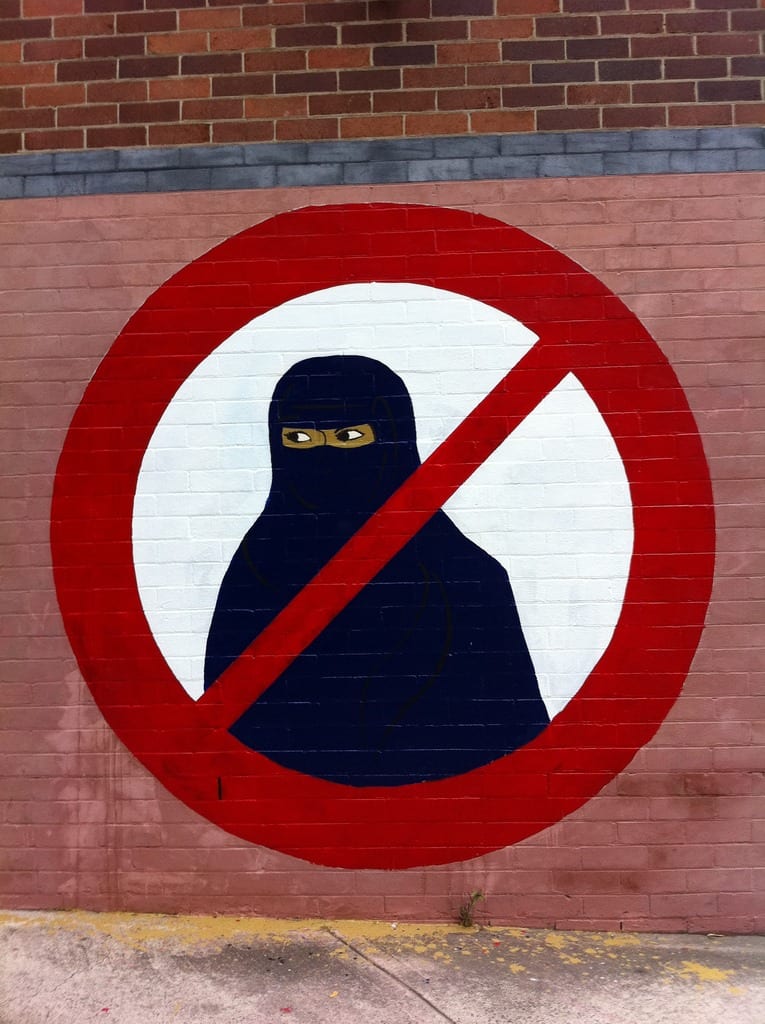
Updated on May, 2023
Dutch Parliament Bans Burqa And Niqab In Some Public Spaces
Introduction
In recent years, the issue of banning the burqa, a traditional Islamic garment that covers the face and body, has sparked intense debate around the world. This article delves into the Dutch Parliament’s controversial decision to ban the burqa and explores the various aspects surrounding this decision.
In this video, we can see that the trend against radical Islam is gaining traction very fast. Denmark has introduced tougher measures to prevent Muslim Immigrants from gaining entry. In addition, a politician recently called for a complete Muslim Entry Ban.
Understanding the Burqa And Niqab
Before exploring the context of the ban, it’s essential to gain a comprehensive understanding of the burqa and niqab, as they are symbolic of religious and cultural significance for many Muslim women.
The burqa, a distinctive garment, is predominantly associated with women in Afghanistan and parts of South Asia. It encompasses the entire body, including the face, and typically has a mesh screen or grille over the eyes, allowing for limited vision. The primary reasons behind wearing the burqa are multifaceted. For some, it’s a deeply personal choice, while for others, it’s a manifestation of their cultural and religious convictions. The burqa, often described as a symbol of modesty, serves as a shield against unwanted attention and a means to uphold a sense of privacy in public spaces.
In contrast, the niqab is another traditional Muslim veil, differing in design and regional prevalence. The niqab predominantly conceals the face, leaving a slit for the eyes, and is worn by some Muslim women as an expression of their faith and modesty. Like the burqa, it can be a matter of individual preference or cultural tradition.
Both the burqa and niqab have sparked widespread debates and discussions, with some arguing that they symbolize the oppression of women and restrict their freedom, while others contend that they represent a personal choice and religious expression. These garments have garnered significant attention in Western countries, where debates about religious freedom, secularism, and women’s rights have led to legislative actions and public discourse.
Understanding the nuances of these garments is pivotal in appreciating the complexities surrounding them. They exist within the intersection of religious and cultural practices, individual choices, and broader societal debates about multiculturalism and women’s rights. The ban on the burqa and niqab, wherever it is implemented, raises profound questions about the balance between personal religious expression and state authority, generating ongoing dialogues that will continue to shape the global discourse on identity, culture, and freedom.
The Dutch Parliament’s Decision
In a move that reverberated beyond the borders of the Netherlands, the Dutch Parliament made a significant decision by passing a law banning the burqa in specific public spaces, which include schools, government buildings, hospitals, and public transport. This legislative act is emblematic of a broader European trend in addressing the place of religious attire within the public sphere and has ignited a spectrum of reactions, ranging from staunch support to vehement opposition.
At the heart of this legislation is the intention to regulate the presence of the burqa in settings where communication and security are paramount. Proponents argue that the ban is a necessary step to safeguard public safety, citing concerns about identity verification and effective communication in crucial public services. In the wake of global security challenges, the notion of full-face veiling has raised concerns about potential security risks.
On the other hand, opponents view this ban as a restriction on religious freedom and a stigmatization of Muslim women who choose to wear the burqa as a matter of personal faith and expression. They argue that the ban infringes upon individual liberties and is a manifestation of Islamophobia.
The Dutch Parliament’s decision is part of a broader European conversation about the accommodation of religious and cultural diversity within secular societies. It raises questions about where the boundaries of religious freedom should be drawn in public spaces and whether such legislation can strike an appropriate balance between upholding security and respecting individual rights.
The mixed reactions to this ban underscore the complexity of the issue, which extends beyond the Netherlands and is a focal point of debate in many Western countries. It is emblematic of the broader conversation about religious pluralism, multiculturalism, and women’s rights in a modern, diverse society.
As the Dutch Parliament’s decision sets a precedent in addressing the presence of the burqa and niqab in public spaces, it serves as a catalyst for ongoing discussions about the intersections of faith, identity, security, and personal freedom in an increasingly diverse and interconnected world. The implications of such legislation reach far beyond its immediate impact, making it a topic of enduring importance in contemporary discourse.
The Debate Surrounding the Ban
The Dutch ban on the burqa and niqab is far from an isolated occurrence; it is emblematic of a broader and ongoing global conversation that traverses the intersection of religious freedom, security, and individual expression. Across the world, numerous countries have implemented similar bans, each with its unique array of arguments and counterarguments, reflecting the complexities inherent in addressing the presence of religious attire in public spaces.
One central argument supporting such bans is rooted in security and communication. Advocates contend that in certain contexts, such as schools, government buildings, hospitals, and public transport, the need for unobstructed identification and open, effective communication is paramount. They argue that full-face veiling presents challenges to both security personnel tasked with identity verification and service providers working to ensure effective, inclusive communication. In this light, the ban is viewed as a measure to enhance public safety.
Conversely, opponents of these bans assert that they infringe upon the fundamental right of religious freedom and personal expression. They argue that wearing the burqa or niqab is often a matter of individual choice and religious devotion, and that the state should not interfere with such personal decisions. Moreover, some argue that these bans, rather than liberating Muslim women, may limit their participation in public life, rendering them isolated and stigmatized.
The global patchwork of legislation surrounding the burqa and niqab ban presents an intriguing case study in the balance between the secular values of the state and individual religious and cultural freedoms. Belgium, France, and several other European countries have enacted such bans, while others have opted for less restrictive regulations. In each instance, the legal and ethical arguments for and against these bans are passionately debated, fueling an ongoing global dialogue.
In summary, the Dutch ban on the burqa and niqab is part of a wider international conversation about religious freedom, personal choice, and the imperatives of security and communication. It is a subject that transcends borders, prompting diverse countries to grapple with the intricate web of rights, liberties, and societal values in the pursuit of policies that resonate with their unique cultural and political contexts. As these debates unfold, they continue to reshape the global discourse on the place of religion and identity within an ever-evolving modern world.
The Rationale Behind the Ban
The Dutch ban on the burqa and niqab, like similar bans in other countries, is underpinned by a complex interplay of security concerns, cultural values, and individual liberties. Advocates of such bans have consistently argued that they are necessary for security reasons. They assert that full-face veiling can be exploited to obscure one’s identity, raising concerns about public safety in certain environments.
Security is a primary pillar supporting these bans. Advocates contend that in settings such as schools, government buildings, hospitals, and public transport, the need for clear identification is paramount. The ability to verify one’s identity, especially in sensitive and high-traffic locations, is considered vital for public security. Banning the burqa and niqab in these contexts is seen as a measure to ensure that security personnel can carry out their duties effectively.
Additionally, proponents argue that the ban fosters open and effective communication. A visible face is vital for interaction, particularly in professional and service-oriented spaces. The ban is framed as a way to promote inclusivity and communication, ensuring that all individuals can participate fully in public life. This perspective aligns with a broader societal value of openness and interaction, particularly within multicultural contexts.
Opponents, however, view such bans as an infringement on religious freedom and personal choice. They argue that wearing the burqa or niqab is often a matter of individual decision and religious devotion, and that the state should not intervene in such deeply personal choices. From this standpoint, these bans are seen as overreach, restricting the fundamental right to practice one’s religion as they see fit. Some opponents contend that instead of liberating Muslim women, these bans may isolate and stigmatize them, undermining their participation in public life.
In conclusion, the Dutch ban on the burqa and niqab is grounded in the delicate balancing act between security, cultural values, and individual liberties. This dual focus on public safety and the protection of personal freedoms underscores the complexity of the issue. The global discussion around similar bans across various countries continues to exemplify the broader challenge of reconciling the imperatives of security and communication with the principles of religious freedom and personal expression. As these debates unfold, they continue to shape the evolving global discourse on the role of religion and identity in modern society.
Legal Implications
Proponents of the ban on the burqa and niqab put forth a compelling argument rooted in security concerns. They contend that these face-covering garments, while worn by a small minority of Muslim women, have the potential to be misused for nefarious purposes, thus posing a security threat in specific public spaces.
The security argument hinges on the idea that full-face veiling can facilitate identity concealment, rendering individuals unidentifiable in public settings. In a world grappling with concerns over terrorism, crime, and the need for transparent identification, this is viewed as a valid worry. Security personnel in schools, government buildings, hospitals, and public transport often rely on visual identification to ensure the safety and well-being of all individuals present. The ability to verify the identity of those accessing these spaces is considered critical for maintaining public safety and thwarting potential security threats.
Moreover, proponents assert that the ban fosters an environment of open and effective communication. The face is a primary conduit for human interaction, and it plays an integral role in our ability to connect with one another. In professions that demand interaction or service to the public, visual communication is paramount. The ban is framed as a measure to promote this essential aspect of social life. It is seen as an effort to uphold the principles of inclusivity and interaction, which are foundational in pluralistic societies.
In contrast, opponents of these bans staunchly uphold the values of religious freedom and personal choice. They argue that the state should not interfere with individual decisions about religious expression and attire. For many, wearing the burqa or niqab is a matter of deep-seated religious devotion and personal conviction. Therefore, they assert that these bans infringe upon fundamental rights, preventing individuals from practicing their religion as they see fit. Opponents also raise concerns about the potential isolation and stigmatization of Muslim women resulting from such bans, asserting that they can undermine rather than enhance women’s participation in public life.
This complex and deeply divisive debate intertwines notions of security, personal freedom, and cultural and religious diversity. It exemplifies the ongoing global challenge of finding a balance between safeguarding public safety and preserving individual liberties, in a world where the boundaries of multiculturalism continue to evolve.
Impact on Religious Freedom
The burqa and niqab bans that have been implemented in several countries have sparked impassioned debates over their potential impact on religious freedom. At the heart of this complex issue lies a delicate balance between safeguarding public safety and upholding individual liberties, including the right to practice one’s religion and express personal convictions.
Religious freedom is a cornerstone of many democratic societies, enshrined in constitutions and human rights declarations. It embodies the principle that individuals should be free to practice their religion without interference from the state. As such, any restriction on religious expression is met with intense scrutiny.
Proponents of the bans often cite the imperative of security in specific public spaces, like schools, government buildings, hospitals, and public transport, where the need for identity verification and clear communication is paramount. While their concerns are rooted in genuine apprehension about public safety, the impact on religious freedom cannot be overlooked. From the perspective of many who wear the burqa or niqab, these bans encroach upon their ability to adhere to their religious beliefs and practices.
Wearing the burqa or niqab is frequently seen as a personal and religious choice, an expression of modesty and a deep-seated conviction. For many Muslim women, it is a matter of faith and a reflection of their commitment to their religious identity. When states prohibit the use of these garments, it is perceived as a restriction on the free exercise of religion and a violation of their right to manifest their faith.
Moreover, such bans have a symbolic impact, sending a message to religious minorities about their place in society. They can foster feelings of isolation and marginalization, further deepening the sense of “otherness” that some religious minorities may already experience.
On the other side of the spectrum, proponents of these bans argue that they are necessary to foster inclusive and open communication and to ensure security in an increasingly uncertain world. The debate over how to balance these concerns with the preservation of religious freedom is at the heart of the global discourse surrounding the burqa and niqab bans. The impact on religious freedom remains an issue of profound significance and enduring debate in the ever-evolving dynamics of multicultural, diverse societies.
Public Opinion
Assessing public opinion on the Dutch ban on the burqa and niqab is a critical dimension of understanding the broader societal response to such legislation. Public sentiment provides valuable insights into how these bans are perceived within Dutch society, reflecting a spectrum of viewpoints that encompass not only security concerns and religious freedom but also cultural diversity and individual rights.
Surveys and interviews conducted among the Dutch population reveal a diverse range of perspectives. Public opinion on the ban is far from monolithic and is often informed by an individual’s values, experiences, and priorities.
Supporters of the ban tend to emphasize the importance of security and communication in specific public spaces. They view these measures as safeguards against potential security threats and stress the necessity of transparent identification, particularly in locations like schools, government buildings, hospitals, and public transport. These individuals often express a commitment to the principles of openness and interaction within society and believe that the ban aligns with these values.
In contrast, opponents of the ban underscore the significance of religious freedom and personal choice. They argue that the state should not intervene in matters of personal religious expression and attire. For them, wearing the burqa or niqab is a matter of individual conviction and faith. They assert that these bans encroach upon fundamental rights and personal liberties, potentially isolating and stigmatizing Muslim women who wear these garments.
In the midst of this divergence in opinions, it is evident that the Dutch public grapples with a multifaceted debate that transcends matters of security and religion. The cultural diversity and pluralism within Dutch society only serve to compound the intricacy of the issue.
As the Dutch people navigate these discussions, their perspectives continue to evolve and adapt, shaped by an array of influences, including media coverage, political discourse, and personal experiences. The public’s stance on the ban reflects the enduring dialogue about how a nation balances issues of security, religious freedom, and cultural diversity, within a framework of democratic values and individual rights. Public opinion remains a vital and dynamic element in the ongoing discourse surrounding these bans and their place within contemporary society.
Enforcing the Ban
Implementing and enforcing a ban on the burqa and niqab is a complex and multifaceted task that extends beyond the mere passage of legislation. It requires a well-thought-out strategy that takes into account various challenges, including identifying violations, ensuring compliance, and addressing the consequences of non-compliance.
- Identification and Verification: One of the primary challenges in enforcing the ban lies in identifying individuals who may be in violation. In settings where the ban is in effect, authorities, security personnel, or service providers must develop mechanisms to verify the identity of individuals. This may involve the need for specially trained staff, clear guidelines, and access to tools such as identification technology to carry out these checks effectively.
- Fostering Compliance: Encouraging individuals to adhere to the ban is another complex aspect of enforcement. It often necessitates public awareness campaigns, educating the public about the ban, its implications, and potential consequences. Ensuring that individuals are aware of the rules is a critical step in promoting compliance.
- Consequences of Violations: Addressing the repercussions of violations requires a clear and fair system of penalties and consequences for non-compliance. The severity of these penalties may vary from fines to other legal measures. Developing a system that is transparent, consistent, and just is vital to ensure that individuals understand the consequences of not adhering to the ban.
- Cultural Sensitivity: Enforcing such bans also calls for cultural sensitivity, especially in countries with diverse populations. Authorities must be attuned to the cultural and religious nuances of the communities they serve, striving to enforce the ban while respecting the rights and values of minority groups.
- Training and Education: Ensuring that those tasked with enforcement are trained adequately and educated about the cultural, religious, and gender-related aspects of the issue is crucial. Training programs can help law enforcement and other relevant personnel navigate the sensitive terrain of implementing a burqa and niqab ban.
- Balancing Public Sentiment: Authorities must also consider public opinion and sentiment surrounding the ban. Striking a balance between enforcing the law and respecting differing viewpoints is a delicate but necessary undertaking.
The enforcement of a ban on the burqa and niqab is a multifaceted challenge that requires careful planning and execution. It necessitates a comprehensive approach that considers identification, compliance, consequences, cultural sensitivity, education, and public sentiment, all within the context of broader discussions on security, religious freedom, and individual rights. As these bans continue to be implemented and debated, the question of enforcement remains a pivotal element of the ongoing dialogue.
Criticisms and Controversies
The Dutch Parliament’s decision to ban the burqa and niqab in specific public spaces has been met with a plethora of criticisms and controversies. These critiques extend beyond the boundaries of the Netherlands and form a significant part of the ongoing global conversation surrounding similar bans.
- Infringement on Religious Freedom: One of the most prominent criticisms centers on the potential infringement on religious freedom. Opponents argue that such bans interfere with an individual’s right to practice their religion freely. They view the ban as a government overreach into matters of personal faith and religious expression. The right to choose one’s attire, they contend, is an integral aspect of religious freedom.
- Stigmatization of Muslim Women: The bans have also been criticized for their potential to stigmatize Muslim women who wear the burqa or niqab. Critics argue that these laws may exacerbate a sense of alienation and isolation among Muslim women, making them feel marginalized within their societies. The ban is perceived as reinforcing stereotypes and contributing to an environment of prejudice.
- Lack of Empirical Justification: Critics question the empirical justification for these bans, pointing out that there is limited evidence to suggest that full-face veiling poses a substantial security threat in the countries where the bans are enacted. They argue that such measures should be based on tangible, demonstrated risks rather than hypothetical scenarios.
- Potential Impact on Gender Equality: The bans have also raised concerns about their impact on gender equality. While proponents argue that these measures liberate women, opponents counter that they may limit women’s participation in public life by restricting their choice of attire. This has led to debates on whether the bans are truly empowering or further restrict women’s autonomy.
- Cultural Insensitivity: In multicultural and diverse societies, these bans have been criticized as culturally insensitive. They may be seen as imposing the majority culture’s values on minority communities. Critics contend that respecting and accommodating cultural and religious diversity should be a paramount concern in democratic societies.
- Political Motivations: Some critics argue that these bans are motivated by political considerations, particularly as they gain traction in countries with rising anti-immigrant or anti-Muslim sentiment. They view the bans as a reflection of political strategies rather than genuine security concerns.
These criticisms and controversies surrounding the Dutch Parliament’s decision reflect the intricate and multifaceted nature of the debate over the burqa and niqab bans. The issues raised, from religious freedom to gender equality and cultural sensitivity, highlight the broader social and political context within which these measures are implemented and debated, ultimately shaping the global discourse on religious expression, individual rights, and cultural diversity.
Conclusion
In conclusion, the Dutch Parliament’s decision to ban the burqa is a multi-faceted issue with profound implications for religious freedom, security, and personal expression. The debate surrounding this ban continues to evolve, raising important questions about the delicate balance between individual rights and public safety.
FAQs
- Is the burqa the same as a niqab?
- How do other European countries view the burqa?
- What penalties exist for violating the burqa ban in the Netherlands?
- Are there exceptions to the burqa ban in specific situations?
- What is the impact of the ban on the lives of Muslim women in the Netherlands?
This content was originally published on Dec 12, 2016, but it has been continuously updated over the years, with the latest update conducted in May 2023.










